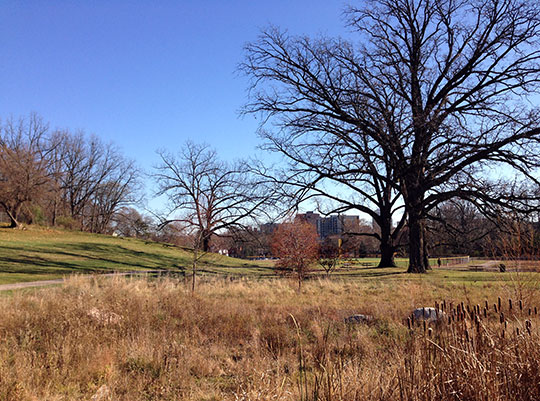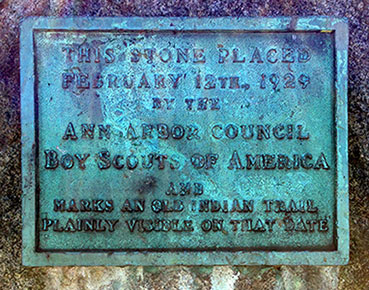The past is always present, as an email from our good customer Susan Wineberg reminded us recently. “I just bought this letter from 1839 on eBay. It’s on foolscap!” she began. Although I knew foolscap was some kind of old paper, I had to look it up online to learn that it refers to a size, 8.5” x 13.5”, which was the traditional standard before the 20th century.

The letter was written by nurseryman Samuel B. Noble who in 1839 was selling plants – including many of the same bulbs we sell today – just a few blocks down the street from us here in Ann Arbor. “I have an establishment . . . in its infancy,” he writes to a fellow nurseryman in Detroit, “and my supply of fruit [trees] except apples is quite limited. My supply of hardy shrubbery and ornamental trees is also small, as well as bulbous roots.”

Noble goes on to list thirteen ornamental plants that he’s seeking for his nursery in this small Midwestern city that just fifteen years earlier had been nothing but wilderness. Seven are bulbs: 100 tulips, 100 hyacinths (once even more popular than tulips), “50 to 100 dahlias of choice varieties, double assorted” (a reflection of the already booming popularity of dahlias which were first grown in US gardens just a few decades earlier), 25 tiger lilies (also relatively new, having arrived from China in 1804), 25 anemones (probably A. coronaria), 25 ranunculus, and 25 crown imperials – but no daffodils, whose heyday was yet to come.
Completing the list of ornamentals are 120 roses, 40 scented-leaf geraniums, 25 each of three shrubs – snowballs, honeysuckle, and double flowering almond – and 10 each of horse chestnut and mountain ash trees as well as “Lonicera flexuoso” (probably the now invasive Hall’s Japanese honeysuckle).

Since he’s writing in March, Noble also asks his Detroit colleague “what time may we expect the Lake to be open” – that is, ice-free – so the dahlias and so on can be delivered with “as little delay as possible,” apparently from the extensive wholesale nurseries near Buffalo, at the far end of Lake Erie.
Noble’s nursery was the first of a series of nurseries and greenhouses that for over 100 years occupied a stretch of low-lying land just five blocks north of OHG’s world headquarters. Today most of the land is a large city park with some magnificent old native oaks and a creek that’s been partially “daylighted.” This past summer, I spent many happy hours walking our new dog Toby there, even before I knew anything about its history – which I’ve since learned includes a Native American trail still visible in 1929 and a flower-filled grade-school garden in the early 1900s.

castor-beans (by middle girl) and vine-covered gazebo. Based on the railroad overpass in back, the image
seems to be reversed. Click to enlarge and flip.
Just outside the park’s eastern entrance, Noble’s small Greek Revival house still stands today, and as Toby and I meander through the park now I keep looking for plants that might be survivors from this pioneering colleague’s nursery. Although I haven’t found anything yet, we’ll keep walking and looking and enjoying – each in our own way – things we can’t actually see.











